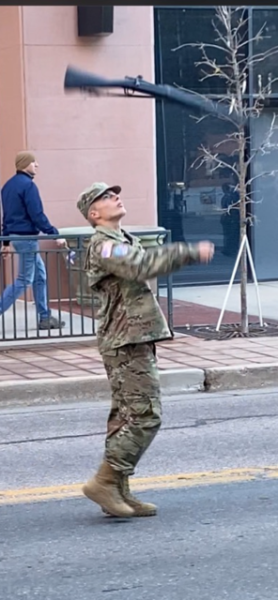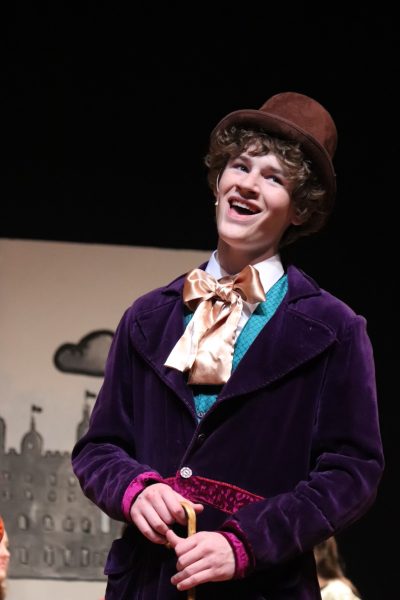Three Pasts for Three Marvelous Mysteries
![[untitled photo of painting of headless horseman].Retreived January 27, 2014, from:http://www.hudsonrivervalley.com/AboutUS/Trivia/HeadlessHorseman.aspx](https://thejetstreamjournal.com/wp-content/uploads/2014/02/The_Headless_Horseman_Pursuing_Ichabod_Crane.jpg)
[untitled photo of painting of headless horseman].Retreived January 27, 2014, from:http://www.hudsonrivervalley.com/AboutUS/Trivia/HeadlessHorseman.aspx
Many have heard of the myths and legends of Robin Hood, the Loch Ness Monster, and the Headless Horseman. To know the origin of these grand myths and legends is to know exactly how they came to be.
Nottinghamshire’s famous knight, Robin Hood, was based on the story of a man who robbed the rich as a hero in the 15th century. Robin Hood’s legacy traveled with time and eventually evolved and became celebrated in the form of plays and musicals performed on May Day (May 1st), a national day honoring workers over many countries on. In the 1800’s, famous writers and illustrators wrote books and drew pictures about the hero Robin Hood. He lived in Sherwood Forest with his merry men who were actually outlaws. After May Day, Maid Marian and Friar Tuck became associated with the Robin Hood lore. There is still controversy today about the exploits of Robin Hood. In spite of speculative information, the impact of the legend surrounding him and his merry crew of men fighting for the poor will remain in people’s minds as a symbol of courage.
Another legend that persists in current folklore, especially in the Scottish territory of England, is the mystery of the beast that inhabits Loch Ness. The beast has taken on the name of the deep water it lives in, The Loch Ness Monster. This small strip of water lends itself to many fond stories about hidden creatures. With its murky deep waters and low visibility, the Ness invites those with imaginations and superstitions. It was claimed that the first sighting of the creature was in 565 A.D. by Saint Columba.
![[untitled photo of Robin Hood shooting].Retreived January 27, 2014, from:http://news.bbc.co.uk/cbbcnews/hi/newsid_8130000/newsid_8133500/8133535.stm](https://thejetstreamjournal.com/wp-content/uploads/2014/02/untitled-300x144.jpg)
8130000/newsid_8133500/8133535.stm
The story says that Saint Columba commanded a man to swim across the Loch after seeing a previous victim with bite marks. When the beast approached the man, Saint Columba banished it with the will of God. Many sightings followed about 1300 years later and even a great photo of the beast was taken by Hugh Gray. Then, on April 21, 1934, the most famous picture of the monster was published in the Daily Mail, taken by a doctor named Robert Wilson, only to find out the photo was a hoax. Sightings in boat sonars were recorded as well, first in 1954 and then recently in 2011.The last picture of Nessie, as the monster is popularly called, was taken in November of 2011 by George Edwards. Scientist Robert Rines claims that due to global warming, there are fewer and fewer citings.
Finally there is the story of the Headless Horseman. Even though the story is fiction, the information is derived from reality at a village named “Sleepy Hollow” in the 1790s in the state of New York. The myth tells of a feud between a schoolmaster by the name of Ichabod Crane and a thug named Abraham “Brom Bones” Van Brunt for the hand of a wealthy farmer’s daughter, Katrina Van Tassel. One night, Ichabod Crane returned home after a Van Tassel party and ran into the Headless Horseman at a bridge, never to be seen again. The Headless Horseman was a beheaded Hessian trooper who wandered the night in search of his head, killing all who he encounters. Locations mentioned in the legend like the grave of the Headless Horseman in the Old Dutch Burying Ground, the Horseman’s Bridge, and Sleepy Hollow can be visited today. Some of the characters are all also based on people present in the village during the 18th century; Ichabod Crane was based on a schoolteacher named Jesse Merwin and Katrina Van Tassel was supposedly based on a maiden named Eleanor Van Tassel Brush. Washington Irving officially published the Headless Horseman in the 1820s. Before Irving, the legend did not describe the Horseman as a fallen Hessian troop.
These mysteries have enchanted minds for centuries to modern day. They’ve caught the eye of historians and captivated people by the stories behind each myth. Each legend has an incredible history.












